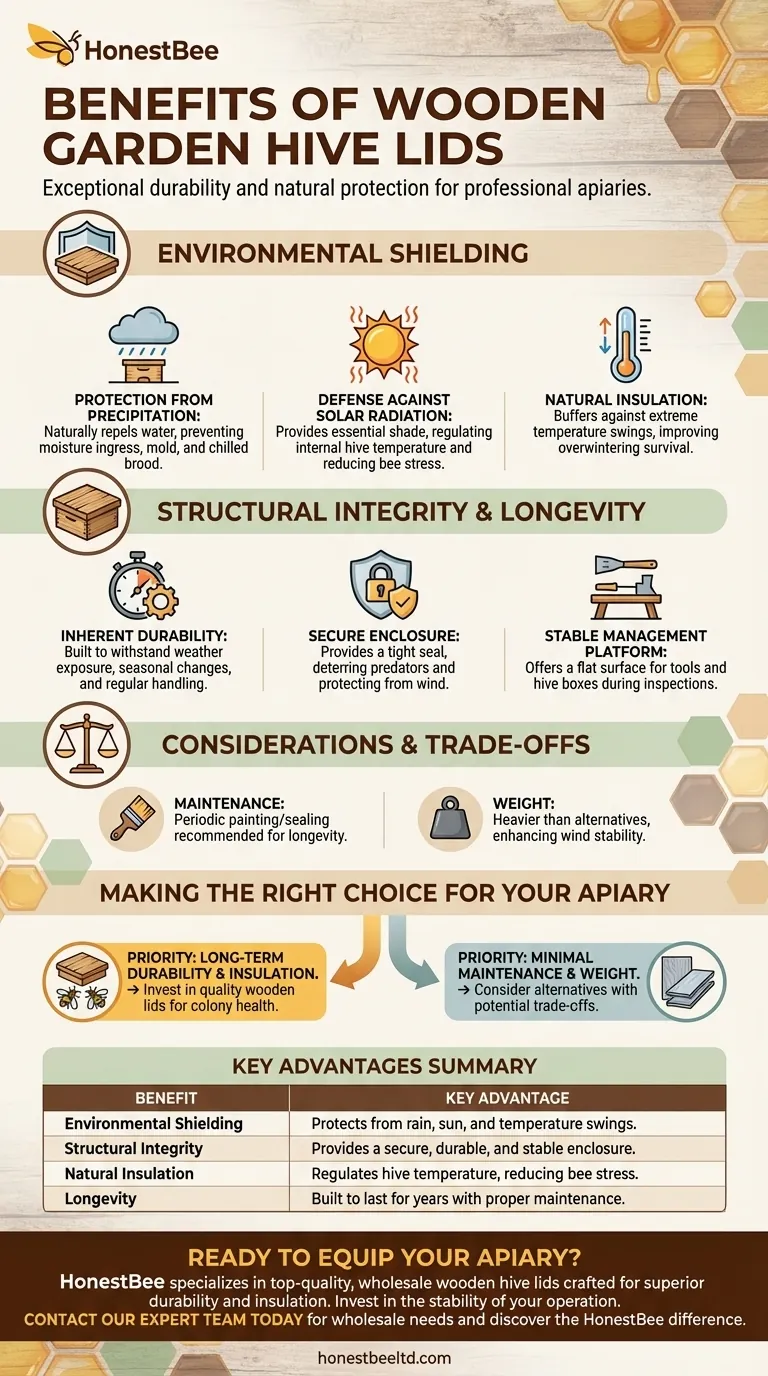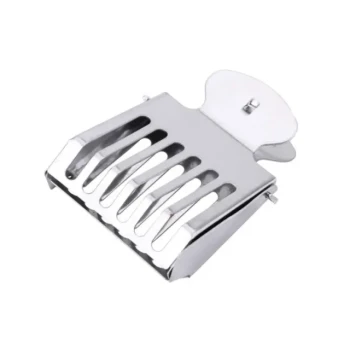The primary benefits of using wooden garden hive lids are their exceptional durability and natural ability to protect the bee colony from the elements. A well-constructed wooden lid acts as a crucial barrier against rain and harsh sun, providing a stable and secure environment essential for the long-term health and well-being of your bees.
A wooden hive lid is more than just a cover; it is a critical component of the hive's climate control system, offering natural insulation and robust, long-lasting protection that directly contributes to the colony's success.

The Primary Role: Environmental Shielding
A hive's success is deeply tied to its ability to maintain a stable internal environment. The lid is the first line of defense against external pressures that can disrupt this delicate balance.
Protection from Precipitation
Wood naturally repels water, preventing rain and moisture from seeping into the hive. This is critical for preventing chilled brood, mold growth, and the dilution of stored honey.
Defense Against Solar Radiation
Direct, intense sunlight can quickly overheat a hive, stressing the colony and forcing bees to expend energy on cooling instead of foraging. A solid wooden lid provides essential shade, helping to regulate the internal temperature.
Natural Insulative Properties
Beyond simple shading, wood is a natural insulator. It helps buffer the colony from extreme temperature swings, keeping the hive cooler in the summer and warmer in the winter, which reduces stress and improves overwintering survival rates.
Structural Integrity and Longevity
The physical construction of the lid ensures the hive remains a secure and manageable structure for both the bees and the beekeeper.
Inherent Durability
High-quality wooden lids are built to last for years. Their robust construction withstands the cumulative stress of weather exposure, seasonal changes, and regular handling during hive inspections.
A Secure Enclosure
A solid, well-fitting wooden lid provides a secure seal for the top of the hive. It can be easily fastened with straps or weighted down, protecting the colony from wind and deterring predators or pests from gaining entry.
A Stable Platform for Management
The flat, sturdy surface of a wooden lid serves as a convenient place to set hive boxes or tools during inspections. This stability makes the process of working with the hive safer and more efficient.
Understanding the Trade-offs
While highly effective, wooden lids are not without their considerations. Objectivity requires acknowledging their practical demands.
The Need for Maintenance
To achieve maximum longevity and weather resistance, most wooden hive components require periodic maintenance. This typically involves painting or sealing the exterior surfaces every few years to protect the wood from moisture and UV degradation.
Weight and Handling
Compared to alternatives like plastic or foam, a traditional wooden lid, especially one clad in metal, can be heavy. This is a minor consideration for handling but is a factor in its stability against wind.
Making the Right Choice for Your Apiary
Your choice of equipment should align directly with your beekeeping goals and management style.
- If your primary focus is long-term durability and superior natural insulation: A well-maintained wooden lid is the proven, professional standard for ensuring colony health.
- If your primary focus is minimizing all maintenance and reducing weight: You might investigate other materials, but be prepared for potential trade-offs in insulative performance and longevity.
Ultimately, investing in a quality wooden lid is an investment in the stability and resilience of your bee colony.
Summary Table:
| Benefit | Key Advantage |
|---|---|
| Environmental Shielding | Protects from rain, sun, and temperature swings. |
| Structural Integrity | Provides a secure, durable, and stable hive enclosure. |
| Natural Insulation | Helps regulate hive temperature, reducing bee stress. |
| Longevity | Built to last for years with proper maintenance. |
Ready to equip your apiary with durable, high-performance wooden hive lids?
At HONESTBEE, we specialize in supplying commercial apiaries and beekeeping equipment distributors with top-quality, wholesale beekeeping supplies. Our wooden hive lids are crafted for superior durability and natural insulation, directly contributing to the health and success of your bee colonies.
Invest in the stability of your operation. Contact our expert team today to discuss your wholesale needs and discover the HONESTBEE difference.
Visual Guide

Related Products
- Wholesales Dadant Size Wooden Bee Hives for Beekeeping
- Long Langstroth Style Horizontal Top Bar Hive for Wholesale
- Professional Insulated Winter Hive Wrap for Beekeeping
- Inner Beehive Cover for Beekeeping Bee Hive Inner Cover
- Assembled Wooden Bee Frames with Beeswax Foundation Ready to Use by HONESTBEE
People Also Ask
- What are the characteristics of oil-based paint for beehives? Durability vs. Modern Practicality
- Why were wooden hives traditionally preferred? For Natural Beekeeping Aligned with Bee Biology
- What should beginners consider when purchasing beekeeping equipment? A Guide to Essential Starter Gear
- What is beekeeping equipment? Essential Tools for Commercial Apiaries & Distributors
- What are the essential pieces of equipment for most beekeepers? Get Started with the Right Gear



















